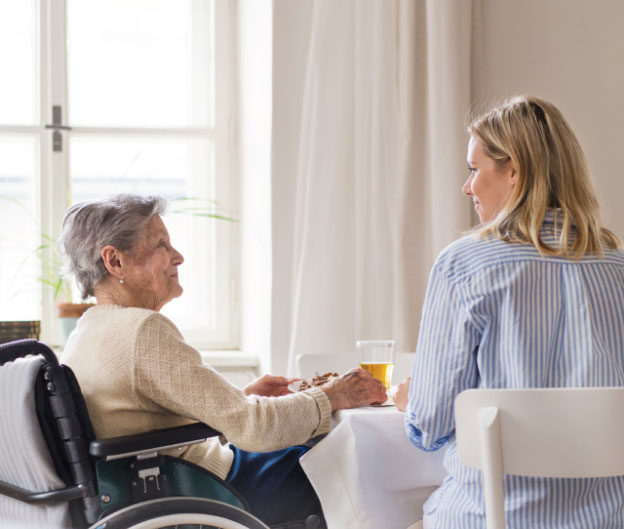April Falls Day 2025: Why Falls Prevention Matters More Than Ever
Falls cause 37% of injury-related deaths – a stark reality that makes April Falls Day 2025 a vital public health campaign. The numbers paint a worrying picture. Each year, 30% of people over 65 take a fall, which shows we need better falls prevention strategies right away.
The good news is we can make a difference. Studies prove that regular exercise cuts fall risks by 23%. This year’s theme “Falls Prevention is Everyone’s Business” puts the focus on working together. The campaign helps you find the right exercise programmes that work for you. It recommends 30-60 minutes of activity most days to stay independent. These recommendations come from complete guidelines that 96 experts from 39 countries developed. This gives you proven strategies to prevent falls.
The Growing Impact of Falls in 2025
Falls have become a growing global crisis that needs immediate action in 2025. Each year, approximately 684,000 fatalities occur worldwide due to falls. These incidents rank as the second leading cause of unintentional injury death, right after road traffic injuries [1].
Current statistics and trends
Recent statistics reveal a worrying picture. Falls lead the list of injury hospitalizations and deaths in Australia, with 238,055 hospital admissions recorded in 2022-23 [2]. The numbers from Western Australia paint an even grimmer picture. Fall-related deaths jumped by 38% from 2016 to 2020, while hospitalizations rose by 26% during the same period [3].
The situation becomes more serious for older adults. People aged 65 and over face a 28-35% chance of falling each year. This risk climbs to 32-42% for those above 70 [4]. The United States reports that over 14 million older adults – one in four – fall yearly [5]. The age-adjusted fall death rate in the US has risen by 41% from 2012 to 2021 [5].
Why falls are a public health priority
Falls must become a priority for several compelling reasons. They greatly affect people’s quality of life. Physical injuries often lead to anxiety, depression, reduced mobility, and lost independence [6].
Healthcare systems bear a heavy burden from falls. These incidents top the list of adverse events reported in hospitals [7]. Western Australia’s 2021 statistics tell a stark story. A resident died every 19 hours from falls. Someone needed hospital care every 15 minutes. Emergency departments saw a falls victim every 11 minutes [3].
Community falls prevention programmes during April Falls Month need these statistics. They show why complete solutions matter. Falls aren’t just isolated incidents. They represent system-wide challenges that need coordinated responses across healthcare settings.
The economic burden of falls
Falls create staggering financial costs. Australia’s healthcare system spent an estimated AUD 7.19 billion on falls injuries in 2020-21 [2]. Older Australians account for AUD 3.52 billion of these annual costs [8].
Different settings show varying costs:
- Hospital falls: Each injury costs about AUD 3,822.48 [9]
- Residential aged care: Fall injuries make up 20% of yearly resident costs [9]
- Total impact: Fall injuries in residential care alone cost about AUD 496.92 million yearly [9]
April Falls Day 2025 approaches with these numbers highlighting why prevention programmes matter. Australia’s ageing population could push costs to AUD 2.14 billion by 2051 if nothing changes [10].
Prevention programmes make both human and financial sense. Research shows that physiotherapy-led prevention can cut falls by 55% in residential care and 24% in community settings [11]. This reduction could save nearly half a billion dollars each year.
Evolution of April Falls Prevention Programmes
Annual initiatives to spotlight the serious issue of falls among older adults marked the modest start of April Falls awareness campaigns. What began as a single day of awareness has grown into April Falls Month® in many regions. This expansion reflects our better understanding of falls as a major public health concern.
History of April Falls awareness campaigns
Healthcare professionals started April Falls Day to raise awareness about falls prevention, especially when you have vulnerable populations [12]. The campaign’s core mission hasn’t changed: it educates healthcare professionals and the public about effective prevention strategies. The initiative has adopted various themes over time. The 2025 campaign emphasises that “Falls Prevention is Everyone’s Business” [12]. This theme highlights the shared responsibility of healthcare settings, families, and communities to prevent falls.
Key milestones in falls prevention research
State-of-the-art approaches in falls prevention stem from ground-breaking research. The World Falls Guidelines Task Force formed in 2019 when 14 international experts came together [13]. Their collaborative effort created the first complete World Guidelines for Falls Prevention and Management for Older Adults. These guidelines addressed gaps that previous versions couldn’t fill [13]. Research showed that any type of exercise can reduce falls risk by 23% [12]. Studies also proved that multidomain interventions work better when tailored to individual risk factors [13].
How 2025 approaches differ from previous years
The 2025 approach to April falls prevention programmes has come a long way. Modern programmes emphasise personalised exercise routines and recommend 30-60 minutes of physical activity most days [12]. Technology now plays a key role through wearable sensors, virtual reality applications, and environmental monitoring devices [13]. The 2025 campaign helps people find exercise programmes that match their needs and interests [12]. Today’s approaches recognise that falls prevention needs multiple strategies. These include healthcare systems, community initiatives, home modifications, and technological innovations. This marks substantial progress from the single-intervention methods used in earlier years.
Multi-level Approaches to Falls Prevention
Falls prevention needs coordinated action from healthcare settings to individual homes. The upcoming April Falls Day 2025 makes it crucial to understand these layered approaches.
Healthcare system strategies
Healthcare facilities are deepening their commitment to falls prevention frameworks. The Australian Commission on Safety and Quality in Health Care has updated best practise guidelines for hospitals, residential aged care, and community care settings. These guidelines highlight delirium as a major risk factor for falls. Some popular strategies lack solid evidence. Bed alarms haven’t proved they work, and many “home-made” risk assessment tools remain untested. The 2013 National Institute for Health and Care Excellence (NICE) guidelines take a different approach. They advise against routine use of fall prediction tools and suggest treating all inpatients over 65 as high-risk.
Community-based initiatives
Community programmes play a vital role. Stay On Your Feet® teaches balance, strength, and home safety. Community Physiotherapy Services offer evidence-based rehabilitation through land, water, and gym-based groups led by senior physiotherapists. Falls clinics provide complete assessments with guidance from geriatricians and allied health professionals. Western Australia’s numbers show why these programmes matter. Falls-related deaths jumped 38% (2016-2020) and hospital visits went up by 26% (2017-2021) [14].
Home environment modifications
Most hazards lurk at home. About half of older adults living in communities fall in their own homes [15]. Research shows home safety changes can cut fall risk by 26% [15]. Occupational therapists spot problems like poor lighting, clutter, loose mats, and slippery floors. Studies confirm that their prescribed changes reduce falls by a lot.
Technology and innovation in falls prevention
State-of-the-art solutions bring new hope. The P4 model leads the way with personalization, prediction, prevention, and participation. Mobile health apps now offer custom screening. Virtual reality systems can spot differences in how people balance. Wearable sensors might tell who’s likely to fall. Advanced motion-sensing technology analyses walking patterns to identify high-risk cases early, so help can arrive before falls happen.
Special Populations and Tailored Interventions
Different groups face unique challenges with falls risk that need specialised approaches during April Falls Day initiatives. Standard prevention strategies don’t work well enough for these vulnerable groups, so they need customised interventions.
Falls prevention for people with cognitive impairment
Cognitive decline makes falls much more likely. Approximately 60% of people with dementia fall annually—twice the rate of cognitively intact older adults [16]. A person’s gait control and stability suffer from cognitive impairment, and regular falls prevention strategies haven’t worked well for this group [17].
The IFOCIS study offers trailblazing solutions through personalised exercise and home hazard reduction programmes that match cognitive abilities [5]. Carers play a vital role by helping people complete exercises and put safety measures in place. Working with carers to improve ‘functional cognition’ makes shared participation possible for people with different cognitive abilities in falls prevention programmes [5].
Cultural considerations in falls prevention
Cultural beliefs shape how people notice and implement falls prevention. Many cultural groups think about exercise in older age as inappropriate or unnecessary. Negative views about frailty can discourage people from joining falls prevention programmes [18].
Creating culturally safe falls prevention needs:
- Trust and rapport building within communities
- Indigenous and non-Indigenous interventions
- Practitioners trained in cultural safety practises [19]
Programmes in specific languages work best among strong social support networks. Healthcare providers and physicians make a significant impact by encouraging participation in different cultural settings [18].
Addressing falls in hospital settings
Falls top the list of reported safety incidents in hospitals [20]. Nursing judgement works just as well as fall risk prediction tools, even though hospitals use these tools extensively [7].
Hospitals can reduce falls by 20-30% with multiple interventions [20]. These include mobility checks, medication reviews, vision tests, and help for confused patients. Safety huddles—quick team meetings with different specialists—have shown good results in some hospitals [20].
Hospitals should use special communication methods and include family members in assessment and care planning for patients with cognitive issues [21]. This patient-focused approach shows that falls prevention in hospitals must adapt to each person’s needs rather than using one solution for everyone.
April Falls Day Conclusion
Falls prevention remains a crucial challenge that affects everyone – from healthcare providers to family members. Exercise programmes and detailed prevention strategies have proven their worth. These programmes can reduce falls by up to 55% in residential care settings and 24% in communities.
The numbers tell a sobering story. In Western Australia, someone loses their life to falls every 19 hours. Even more alarming, someone needs hospitalisation every 15 minutes. These statistics, along with the AUD 7.19 billion annual cost, show why prevention should be our top priority.
April Falls Day 2025 brings a fundamental change toward shared responsibility and tailored approaches. Traditional prevention methods still work well. State-of-the-art technology and tailored interventions now provide extra tools to reduce fall risks. People with cognitive impairment especially benefit from customised strategies that address their unique challenges.
Your active participation in available programmes and knowledge of risk factors will determine success in falls prevention. Healthcare settings, community initiatives, and individual actions must work together. This integrated effort helps create safer spaces for vulnerable people and reduces how falls affect our society.
References
[1] – https://www.who.int/news-room/fact-sheets/detail/falls
[2] – https://www.aihw.gov.au/reports/injury/falls
[3] – https://www.health.wa.gov.au/Articles/F_I/Falls-prevention-and-management-in-WA/Research-and-education-in-falls/Impact-of-Falls
[4] – https://www.who.int/publications/i/item/9789241563536
[5] – https://neura.edu.au/project/preventing-falls-older-adults-cognitive-impairment-dementia-ifocis
[6] – https://www.frontiersin.org/journals/public-health/articles/10.3389/fpubh.2022.902599/full
[7] – https://pmc.ncbi.nlm.nih.gov/articles/PMC6446937/
[8] – https://www.phrp.com.au/issues/april-2024-volume-34-issue-1/a-systems-approach-to-falls-prevention-policy/
[9] – https://www.uq.edu.au/news/article/2025/01/cost-of-falls-aged-care-uncovered
[10] – https://nationalseniors.com.au/news/latest-news/study-reveals-cost-of-fall-injuries
[11] – https://australian.physio/media/falls-destroy-lives-and-cost-system-5-billion-apa-has-solutions
[12] – https://fallsnetwork.neura.edu.au/aprilfalls/
[13] – https://pmc.ncbi.nlm.nih.gov/articles/PMC9523684/
[14] – https://www.health.wa.gov.au/Articles/F_I/Falls-prevention-and-management-in-WA/Community-based-falls-prevention-and-management
[15] – https://www.injurymatters.org.au/programmes/stay-on-your-feet/information-for-health-and-community-workers/home-safety-and-falls/
[16] – https://cdpc.sydney.edu.au/research/maintaining-function/falls-prevention/
[17] – https://pmc.ncbi.nlm.nih.gov/articles/PMC8665555/
[18] – https://www.researchgate.net/publication/279457802_Cultural_influences_on_exercise_participation_and_fall_prevention_A_systematic_review_and_narrative_synthesis
[19] – https://www.cambridge.org/core/journals/canadian-journal-on-ageing-la-revue-canadienne-du-vieillissement/article/culturally-safe-falls-prevention-programme-for-inuvialuit-elders-in-inuvik-northwest-territories-canada-considerations-for-development-and-implementation/010D965FA479BB54398C115F380CEC87
[20] – https://pmc.ncbi.nlm.nih.gov/articles/PMC6297656/
[21] – https://www.safetyandquality.gov.au/sites/default/files/2024-10/falls-guidelines-hospitals-draught.pdf
Falls Awareness Week is a public health initiative dedicated to raising awareness about the risks of falls, especially among older adults. It highlights the importance of prevention strategies, encourages participation in exercise and home safety programs, and promotes community-wide efforts to reduce falls. Many regions extend the campaign throughout April as April Falls Month, delivering education sessions, workshops, and screenings.
What are the 5 P’s of Falls Prevention?
The 5 P’s are a simple mnemonic often used in clinical settings to assess and reduce fall risk, especially in hospitals and aged care:
Pain – Is the person in pain that could affect their mobility or balance?
Position – Are they positioned safely and comfortably?
Personal Needs – Do they need assistance with toileting or hygiene?
Placement – Are personal items like call bells, glasses, or water within reach?
Pump – Is their IV pump or equipment functioning and placed safely?
What are the activities for seniors who prevent falls?
Activities that help older adults prevent falls focus on improving balance, strength, and mobility. Proven options include:
Tai Chi – Enhances coordination and confidence
Strength training – Builds muscle in legs and core
Walking programs – Promotes endurance and gait stability
Water-based exercise – Low-impact yet effective for joint mobility
Home safety walkthroughs – Reduce trip hazards
Balance-specific classes – Often run by physiotherapists or gyms
Engaging in 30–60 minutes of activity most days is recommended to maintain independence.
What are the 4 P’s of Falls Prevention?
The 4 P’s are another patient safety tool, often used by nursing staff during hourly rounds to prevent falls:
Pain – Ask if the person is in discomfort.
Potty – Check if they need to use the bathroom.
Positioning – Ensure they are in a safe, comfortable position.
Possessions – Make sure essential items are within reach.
This proactive approach prevents unnecessary movement and helps patients stay safe.










